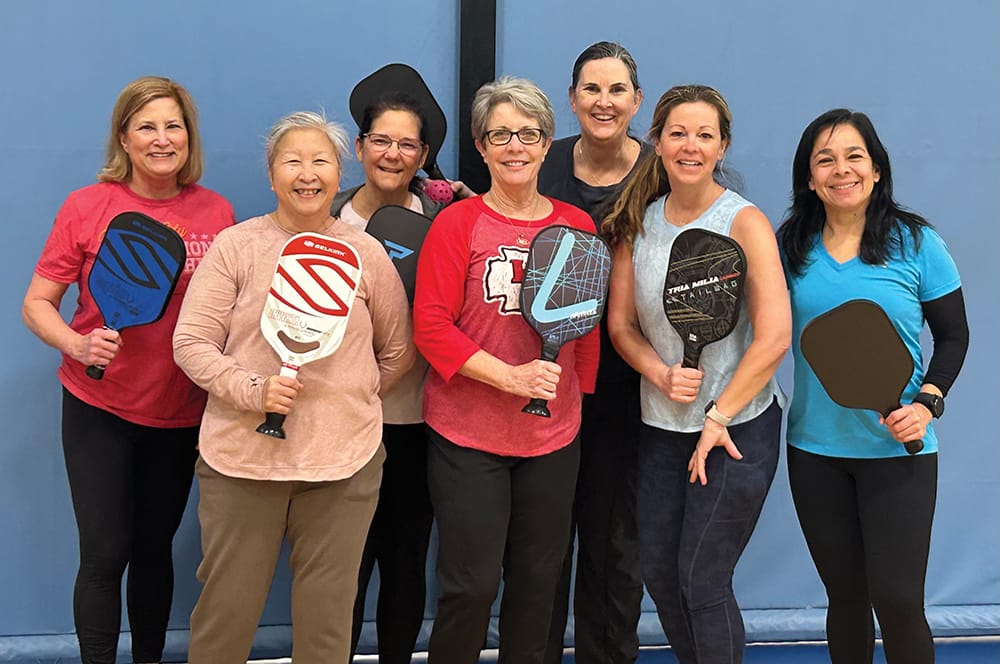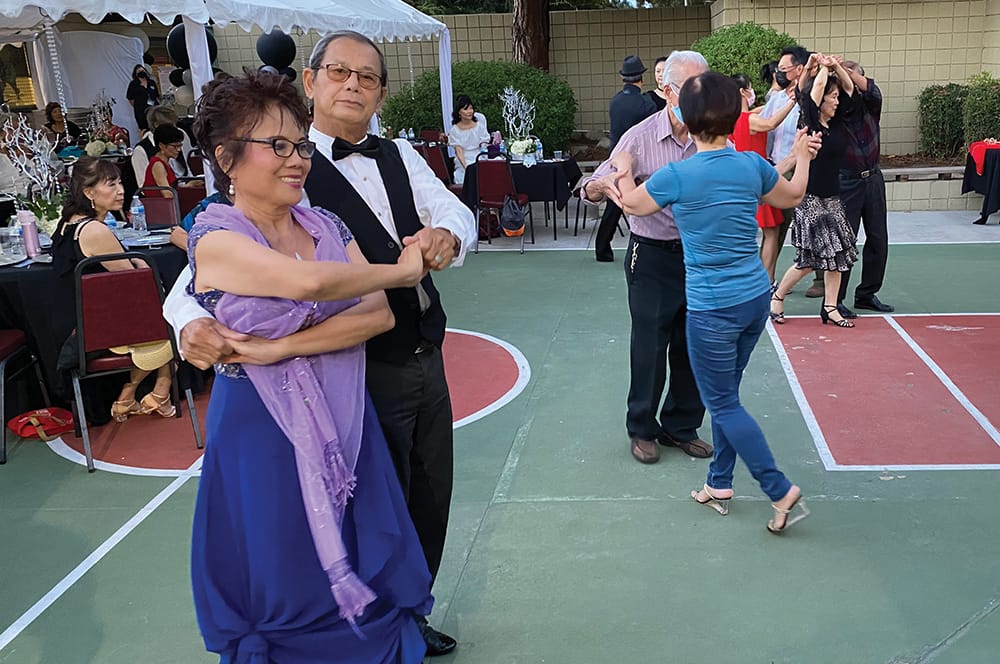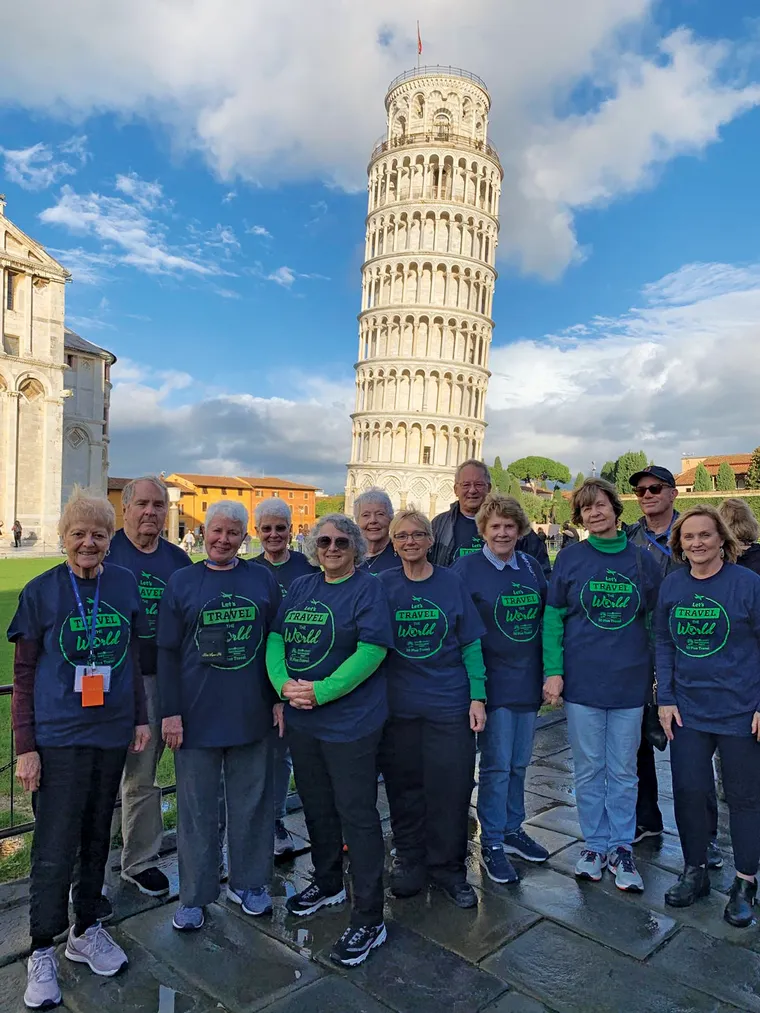Senior programming evolves to meet modern needs
Some long standing senior programs endure regardless of trends.
“There’s still the staple bingo that seniors absolutely love,” says Mercy Santoro, Assistant Director of the County of Los Angeles Department of Parks and Recreation. But that hasn’t stopped her department or other departments around the country from diversifying their offerings. Revamped programs are appealing to broader swaths of the senior population, helping even the staunchest bingo supporters discover new favorites.
“We are seeing a trend that our participants want to continue to learn and try new things while also seeking a social aspect,” says Kari Baesel, CPRP, Department Manager for the Johnson County Park & Recreation District’s (Kan.) 50 Plus Program. The award-winning initiative sees over 45,000 residents across 1,250 programs each year, and has catered to the needs of the local aging population since 1971.
“Even if we are offering a program like bingo,” Baesel says, “we make it into more of a social event with themes, refreshments, and sometimes even entertainment.”
Traditional activity or not, what seniors seem to crave are one-of-a-kind experiences that are affordable and accessible. Their expectations align perfectly with the guiding ethos behind the programs that serve them.
Programs With Purpose
Los Angeles County has senior centers or senior programs in 21 local community parks, spread across 4,000 square miles. Though the locations and neighborhoods vary, they’re united by a common goal.
“The mission and vision behind the services we provide are really around fostering inclusivity, equity, health, and wellness,” Santoro says. “And being stewards of land, that we create spaces for our older adults to play throughout life.”
The focus on seniors has been foundational to Santoro’s department.
“Some of these parks historically were built and designed because there was a senior population there,” Santoro says. That focus remains strong—the department’s latest strategic plan places great emphasis on senior well-being over the next five years, and senior programming will expand to two additional parks by 2024.
Prioritizing seniors is also the key for the city of Tucson Parks and Recreation Department.
Ashley Guerrero, Recreation Coordinator for the El Pueblo Center, points to “a sense of belonging for seniors” as the driving force behind its offerings. She says that parks programming tends to center on youth because many seniors have caretakers or are in nursing homes. But El Pueblo has a robust community of seniors who live independently and participate frequently.
Baesel says, “Our mission is to provide unique opportunities and lifelong memories that inspire a healthier community.”
Creating that healthier community starts with physical fitness, but as the general understanding of wellness has grown, so have the corresponding programs.

In Pursuit Of Total Wellness
With good reason, senior programs often prioritize movement.
“It’s important to us that our participants stay active to maintain energy and improve balance, flexibility, mindfulness, and overall strength,” Baesel says. The 50 Plus Program addresses these needs through yoga, weightlifting, tai chi, and classical stretch classes, as well as nature hikes. Additionally, some activities are designed to address specific needs that arise with aging. For example, Baesel says the 50 Plus group partners with the Arthritis Foundation for an exercise program focused on range-of-motion and endurance-building exercises, relaxation techniques, and health education.
Participants appreciate the breadth of choices. However, there are some clear favorites that are indicative of trends beyond the senior community. Consider pickleball, for instance. Baesel says the sport has taken off, so much so that 50 Plus provides progressive lessons to accommodate all skill levels. New players can start with Pickleball 101, then advance to Pickleball 102 and more tailored workshops. There’s also Practice Play, which mixes instruction and round-robin play, as well as drop-in play opportunities, leagues, and tournaments.
Still, there are other popular programs that aren’t necessarily about physical fitness but still promote aspects of wellness, like Mahjong, educational Lunch and Learns, and travel programs. These varied interests show just how expansive the term wellness can be.
“We think about our core components as it relates to the social, community, and developmental needs of older adults,” Santoro says of Los Angeles County, which serves roughly 133,000 seniors annually. Those needs include food security. Many of the county’s senior initiatives are associated with congregate meal programs, and Santoro says the department serves around 50,000 meals a year.
Many of the core components provide offerings like the Hollywood Bowl access program, which allows for two visits to the concert series each summer, combining music, social connection, and local landmarks for a memorable experience. Santoro says her department leverages county assets, regional parks, and garden destinations like the Descanso Garden Arboretum so seniors can be together and enjoy the outdoors.
Among the most popular on-site programs are dances, social hours, and fine-arts activities like ceramics, sewing, and painting. However, senior centers and parks also offer classes for cultural dance, balance, mobility, chair exercise, yoga, tai chi, and other culturally relevant programming.
At the El Pueblo Center, which sees anywhere from 12,000 to 15,000 seniors annually, the monthly calendar is packed with activities that honor culture, heritage, and local diversity.
“The community we have here is predominantly Hispanic and Spanish-speaking,” Guerrero says, so many events are built around culturally specific holidays like Mexican Mother’s Day and Mexican Independence Day. The cultural relevance drives a high level of engagement, with upwards of 110 seniors attending individual events on average. The center also operates 9 a.m. to 4 p.m., five days a week, offering longer operating hours than those at other area senior centers and attracting more patrons.
Though the events are undeniably popular, Guerrero says the El Pueblo Center focuses heavily on regular programming that covers a range of interests—Zumba, chair exercise, knitting, quilting, dominoes, and card clubs, to note a few. There’s also a monthly potluck.
Guerrero says that each ongoing activity has its dedicated fanbase, and no single program tends to be more favored than another. She gathers feedback regularly.
“We ask them once a month in our meetings, ‘Hey, are you guys looking to get new classes, or are you wanting to start a program?’” Guerrero adds that center patrons “will speak their mind” and share whether current programs are enough. Meetings typically cover upcoming field trips, center events, seasonal classes, and reminders about decorum and center policies.
With frequent foot traffic, the behavioral reminders can be helpful. But ultimately, being together in person—especially after the struggles of the pandemic years—is enough to overcome any issues.

A Return To Normal
The post-COVID participation landscape looks quite similar to life before the pandemic.
“We’re at pre-COVID levels of participation,” Santoro says. She adds that pandemic-era virtual calls were more about checking in with seniors, as opposed to formalized programming. Seniors in her jurisdiction were eager to get back together.
“I remember the first day we opened our Steinmetz Senior Center, with no meals, just to reopen indoors. There was a line of seniors ready to come in and do the things that they love to do safely,” she says. As the county reopened, her department added 10 new senior activities and full-day senior programs across several sites. The demand was there.
Guerrero says virtual offerings were challenging for El Pueblo Center’s population, so in-person gatherings have always been preferred. The only difference now is some patrons may stay home when sick or avoid larger events to reduce risk of possible exposure.
At 50 Plus, however, pandemic learnings inform an ongoing, robust slate of virtual offerings, with particular programs accommodating anywhere from 10 attendees to nearly 100. Sessions offer everything from virtual games to guest speakers.
“Every person has their own comfort level,” Baesel says, “and we encourage them to participate in the way that feels best for them.”
Comfort, personal preference, and variety remain at the top of the list as departments look ahead to new programming. Baesel is working on introducing more evidence-based options for seniors, like The Aging Master Program, researched by The National Council on Aging, and The Arthritis Foundation’s Walk with Ease program. Guerrero is launching chair volleyball and searching for additional tai chi instructors to help run classes year-round. And Santoro is gearing up for Parks After Dark.
The summer violence-prevention initiative activates 34 parks from 6:00 to 10:00 p.m., three nights a week for eight weeks. Activities include a senior social hour on Thursday nights and Senior Proms at nine sites. A popular event from summer 2022, the Senior Proms give participants a chance to recapture the magic of high school dances.
Aside from Parks After Dark, Santoro says she’s thinking about scale, especially as California’s senior population grows. More seniors are joining friends at facilities, increasing demand for recreational space, and seniors on the younger end of the spectrum are looking for programs that acknowledge their interests in more vigorous sports and activities.
Santoro says, “We’re really being intentional about, how do we program for those seniors?”


